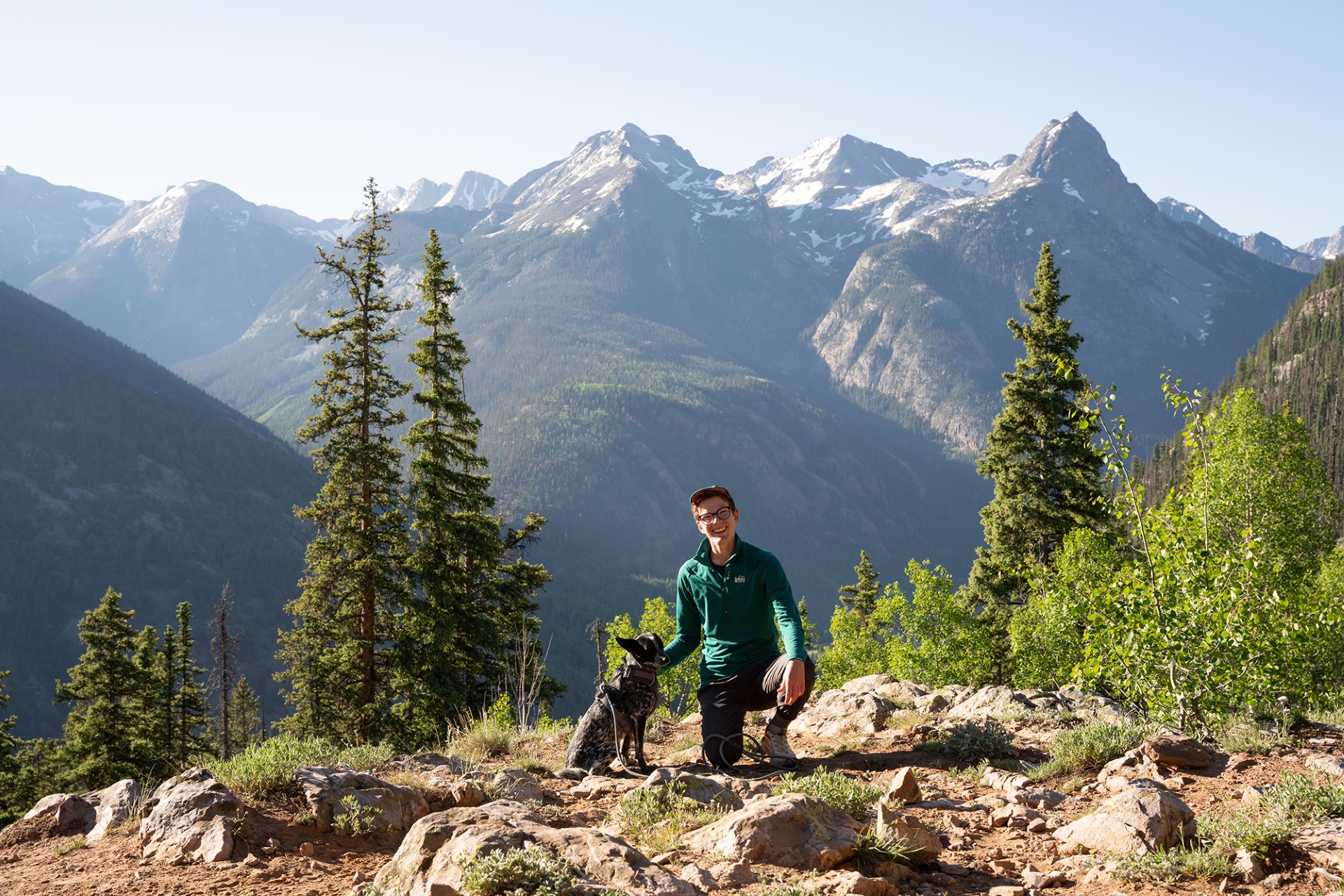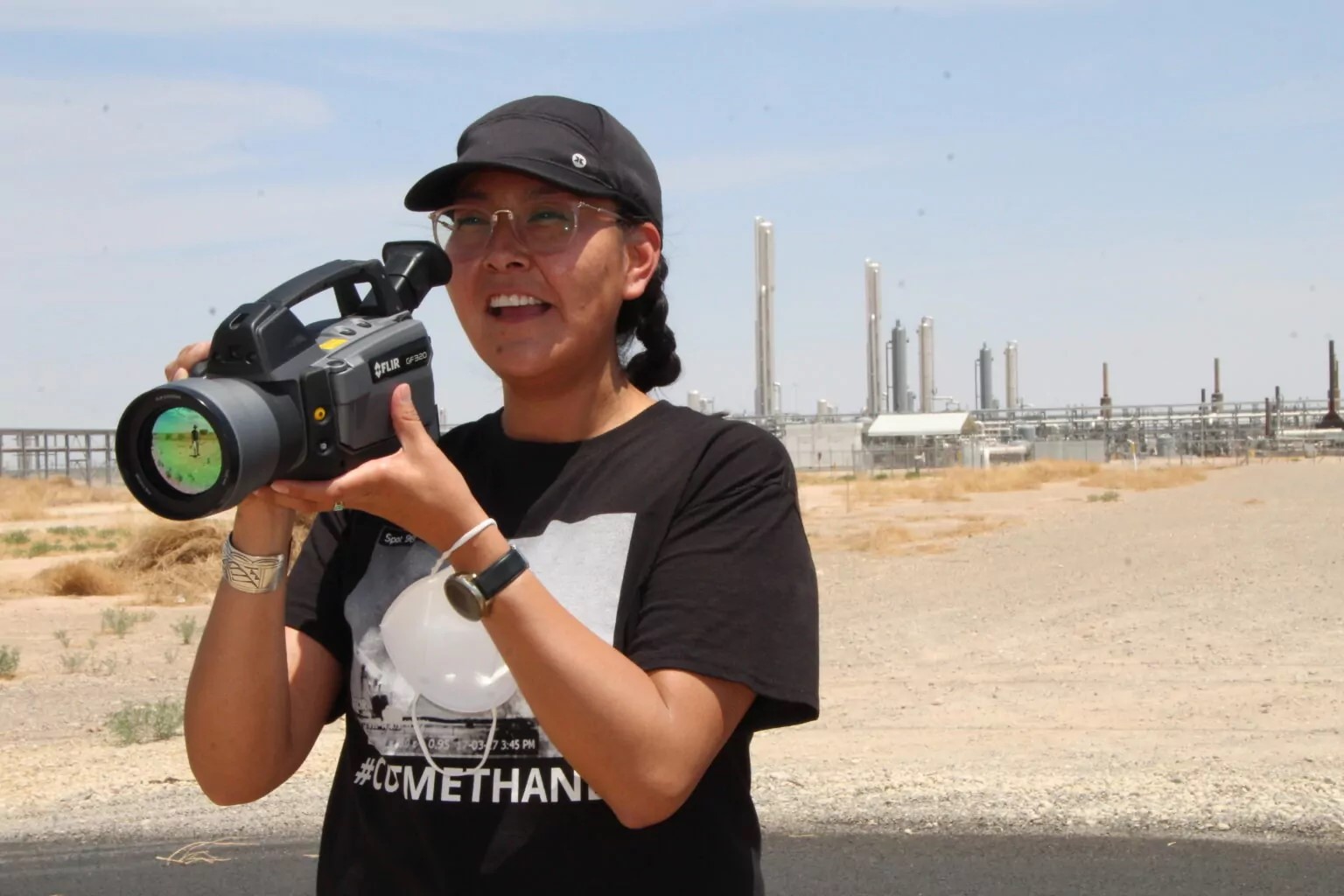Get to know Dr. Silas Grant, Instructor of GEOG 499: Environmental Justice in Greater Chaco!
 (Photo: Dr. Silas Grant)
(Photo: Dr. Silas Grant)
Dr. Silas Grant is a Campaigner with the Climate Law Institute at the Center for Biological Diversity and an Assistant Professor in the Department of Geography and Environmental Studies at UNM. More broadly, Dr. Grant is an organizer, educator, and researcher working on climate change and just transition in New Mexico. As a cultural anthropologist and geographer, they are interested in questions of jurisdiction, knowledge production, coloniality, and affect. Grant's current research projects focus on understanding and addressing the impacts of fracking across the Greater Chaco Landscape of northwestern New Mexico, and on examining the intersections of struggles for environmental justice and queer and trans liberation.
Below are Dr. Grant's responses to questions about environmental justice, community geography, the spring field course, and living in New Mexico:
Q: What do you think is the most pressing environmental issue right now in New Mexico?
A: The single biggest contributor to the climate crisis in New Mexico is our state’s surging oil and gas production. New Mexico has become the 2nd largest oil producer and 7th largest gas producer in the United States, which is the largest producer in the world. Not only does our state’s oil and gas extraction play a big role in the climate crisis, but it also creates harmful pollution that puts frontline communities and ecosystems in the Greater Chaco and Greater Permian regions at risk.
Q: What’s the most important thing you’ve learned while working on environmental justice issues in Greater Chaco?
A: The people I organize and do research with in the Greater Chaco Landscape taught me about the Jemez Principles of Democratic Organizing, which are principles for working across difference to achieve environmental and economic justice. I’ve learned a lot by iteratively working with others to put variations of these principles into practice, and one that stands out is “Let People Speak for Themselves”, which is the idea that people directly impacted by environmental injustice ought to be the spokespersons for that issue. At face value this may not seem like a profound concept, but it’s so important and I think inherently challenging to power, especially in a place in like the Greater Chaco region where a long legacy of extractive colonialism has radically altered the landscape and power relations to suit the interests of both settlement and capital.
 (Photo: Kendra Pinto, Four Corners Indigenous Community Field Advocate with Earthworks, frontline community member in Eastern Navajo Agency, and community instructor for GEOG 499. During the course, Kendra will lead a field trip and teach participants about using optical gas imaging technology to make invisible pollution visible. Photo courtesy of Earthworks.)
(Photo: Kendra Pinto, Four Corners Indigenous Community Field Advocate with Earthworks, frontline community member in Eastern Navajo Agency, and community instructor for GEOG 499. During the course, Kendra will lead a field trip and teach participants about using optical gas imaging technology to make invisible pollution visible. Photo courtesy of Earthworks.)
Q: What got you interested in community geography?
A: For a long time, I’ve been interested in how research can be both accountable and of service to the communities affected by it. People are theorizing the world all the time as they move through their lives, and researchers have so much to learn from those analyses. I first became interested in community-engaged research while I was doing a Master’s in geography and organizing with a large intersectional movement to stop tar sands pipelines in the Great Lakes Region. I looked for places where I could make a modest contribution to that work through research.
Q: What are you most excited about for the new spring field course?
A: I’m so grateful to the many community partners who will be teaching parts of the course with me and Dr. Lane. I am excited for all of us participating to learn together, and to have an opportunity to contribute to the work of protecting the Greater Chaco Landscape. That we get to do some of this learning on the land is a real gift.
Q: What’s your favorite place in New Mexico?
A: This is a tough one! I’m so grateful to get to be here, in this beautiful place where I’m an uninvited guest. I have so many favorite spots, but the first that comes to mind is the Aspen Vista Trail in the Santa Fe National Forest. I go there almost weekly with my partner and dog to walk or run up and down the mountain, and I love watching the forest ecology change through the seasons.

